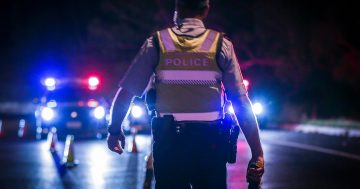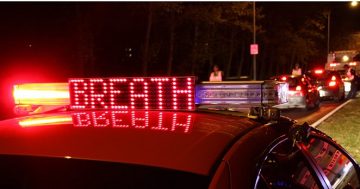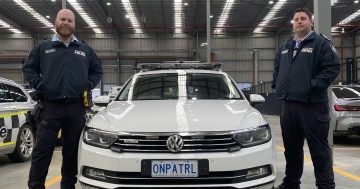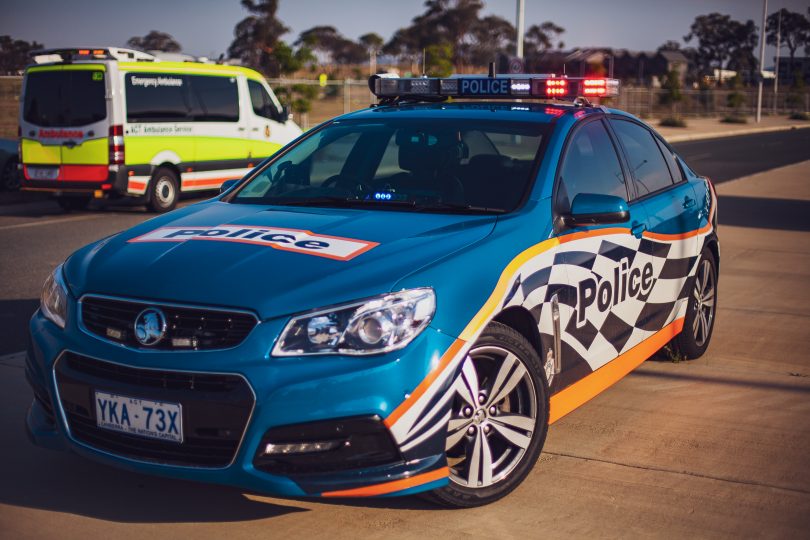
Drivers must slow down to 40km/hour when driving past ambulances, police and other emergency vehicles with red or blue flashing lights on the side of the road. Photo: George Tsotsos.
The Australian Federal Police Association and NRMA are calling on the ACT Government to review the law that says drivers need to slow down to 40km/hour when passing emergency service vehicles on the side of the road, saying it causes more danger on Canberra roads.
Drivers must slow down to 40km/hour when driving past ambulances, police and other emergency vehicles with red or blue flashing lights on the side of the road according to a new law that came into effect on 14 April 2018.
Drivers who fail to do so will cop two demerit points and a fine of $257.
The law was aimed to improve safety for emergency responders, but the Australian Federal Police Association and NRMA believe the law leads to unintended dangers and are calling on the government to review the legislation.
According to the law, when a driver approaches an emergency vehicle that is stationary or moving slowly on a road displaying flashing red or blue lights, they must:
- Approach the emergency vehicle at a speed at which the driver can, if necessary, stop safely before reaching the vehicle;
- Give way to emergency workers on foot near the emergency vehicle;
- Pass the emergency vehicle at no more than 40km/h, or if a lesser speed limit applies, no more than the speed limit; and
- Continue to drive at a speed at which the driver can, if necessary, stop safely, until the driver is a sufficient distance past the emergency vehicle to not pose a risk to any emergency worker on foot.
AFPA president Angela Smith said she had spoken to police members who have witnessed countless near-misses due to drivers rapidly decreasing their speed and nearly causing collisions. She believes the legislation doesn’t work and isn’t easily enforced.
“The AFPA understands the rationale behind the legislation but this legislation is a double-edged sword,” she told Region Media. “We acknowledge the goodwill shown by the ACT Government with this legislation, but it needs reviewing.
“I believe that the law puts motorists at risk, and secondly, as a result of the increased collision risk, puts further risk to emergency services workers.”
The AFPA wants the speed limit to be scrapped and instead instruct motorists to move into the right-hand lane or as far over to the right as they safely can when passing police or an emergency service vehicle stopped on the side of the road.
Ms Smith believes the majority of motorists already do the right thing by slowing down to a safe speed and only a small percentage of the community fail to be safe around emergency vehicles.
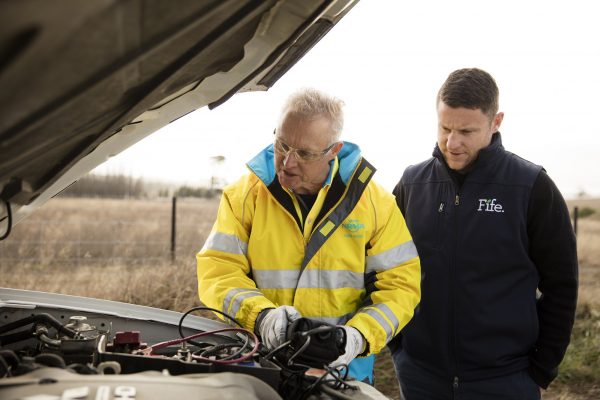
The NRMA echoes the AFPA’s sentiments on this matter. Photo: Supplied by the NRMA.
NRMA spokesperson Peter Khoury echoed the AFPA’s comments and believes there needs to be a common sense approach to the law.
“We have heard extensively from our members who are concerned about the law and the potential risks that have now occurred from people to drop their speed limits quite dramatically – in some instances from 100 to 40 – when they see the flashing lights,” he said.
“It is really important that we take a common sense approach to this policy, which means sensibly slowing down and allowing space to emergency services who are on the side of the road, including NRMA patrol vans, but not in a way that puts your life at risk or others at risk.”
Mr Khoury said the NRMA also had some concerns about the law due to the legislation not including NRMA patrol vans.
“We want the law to be extended to include NRMA patrol vans because we know of the risks,” he said. “We had that horrific incident in 2012 when we lost one of our staff on the Hume Highway because of this very risk.
“The whole purpose of this policy was to change behaviour and to make people aware of the risks. It doesn’t mean trying to get from 100km per hour to 40 in five metres because that is dangerous.
“Instead it means slowing down sensibly and giving people space.”












